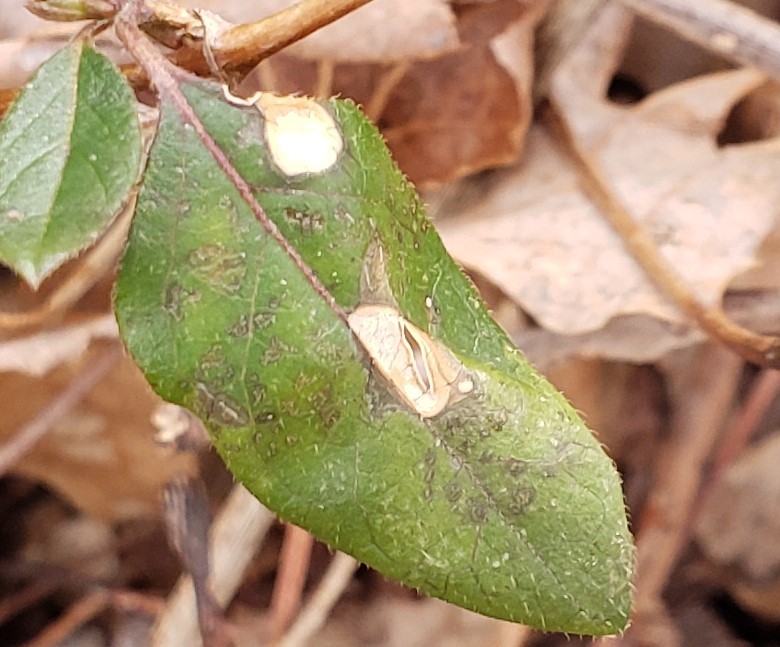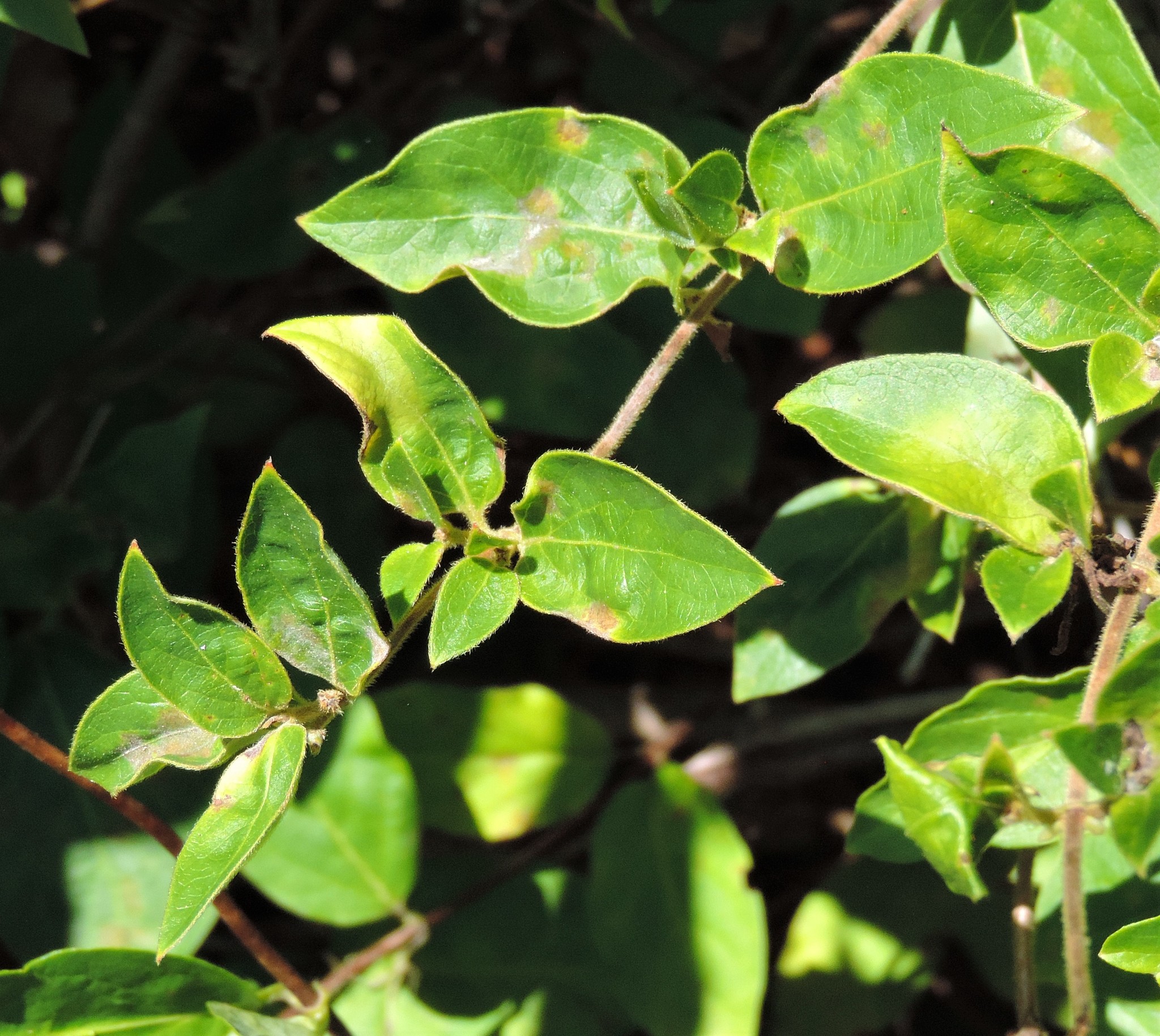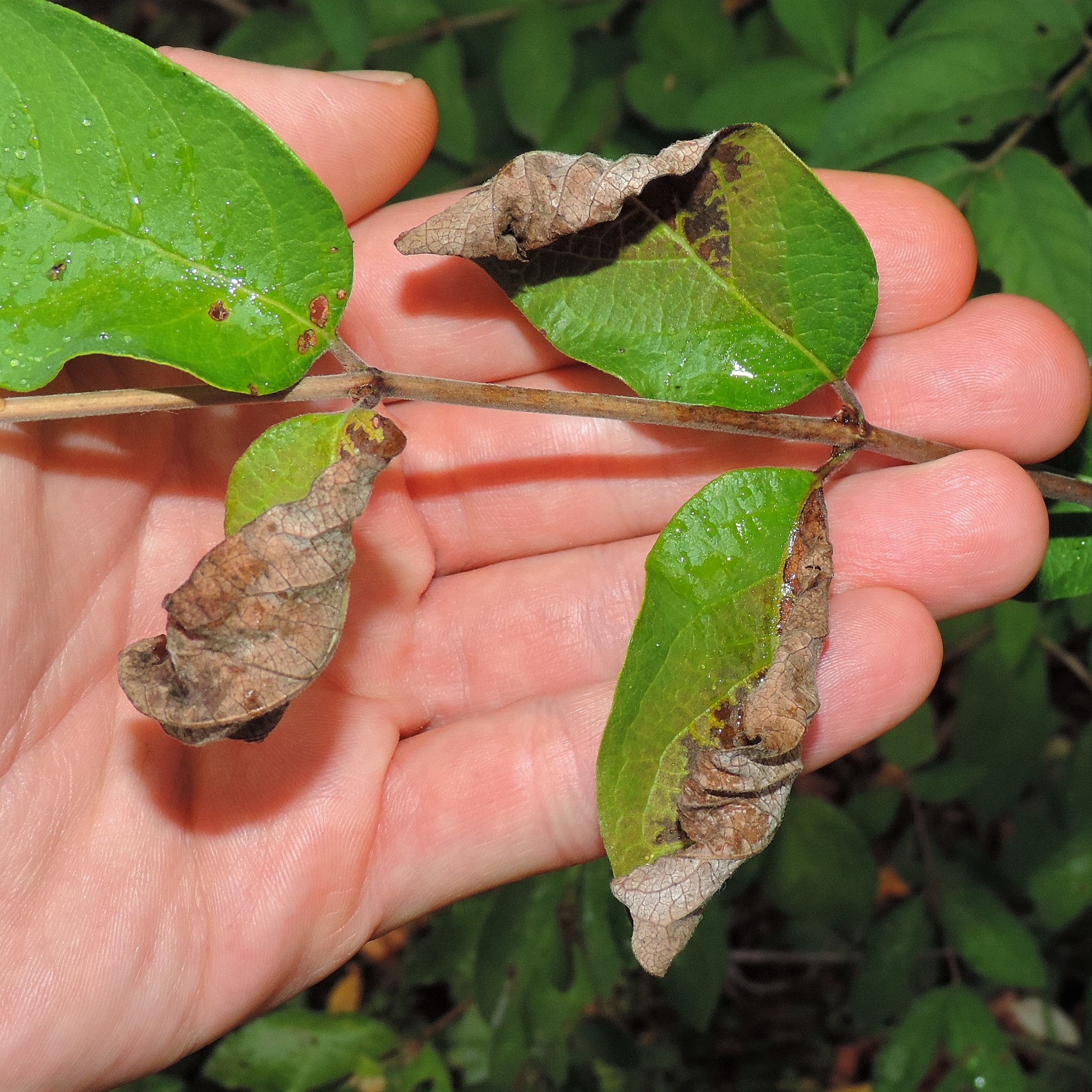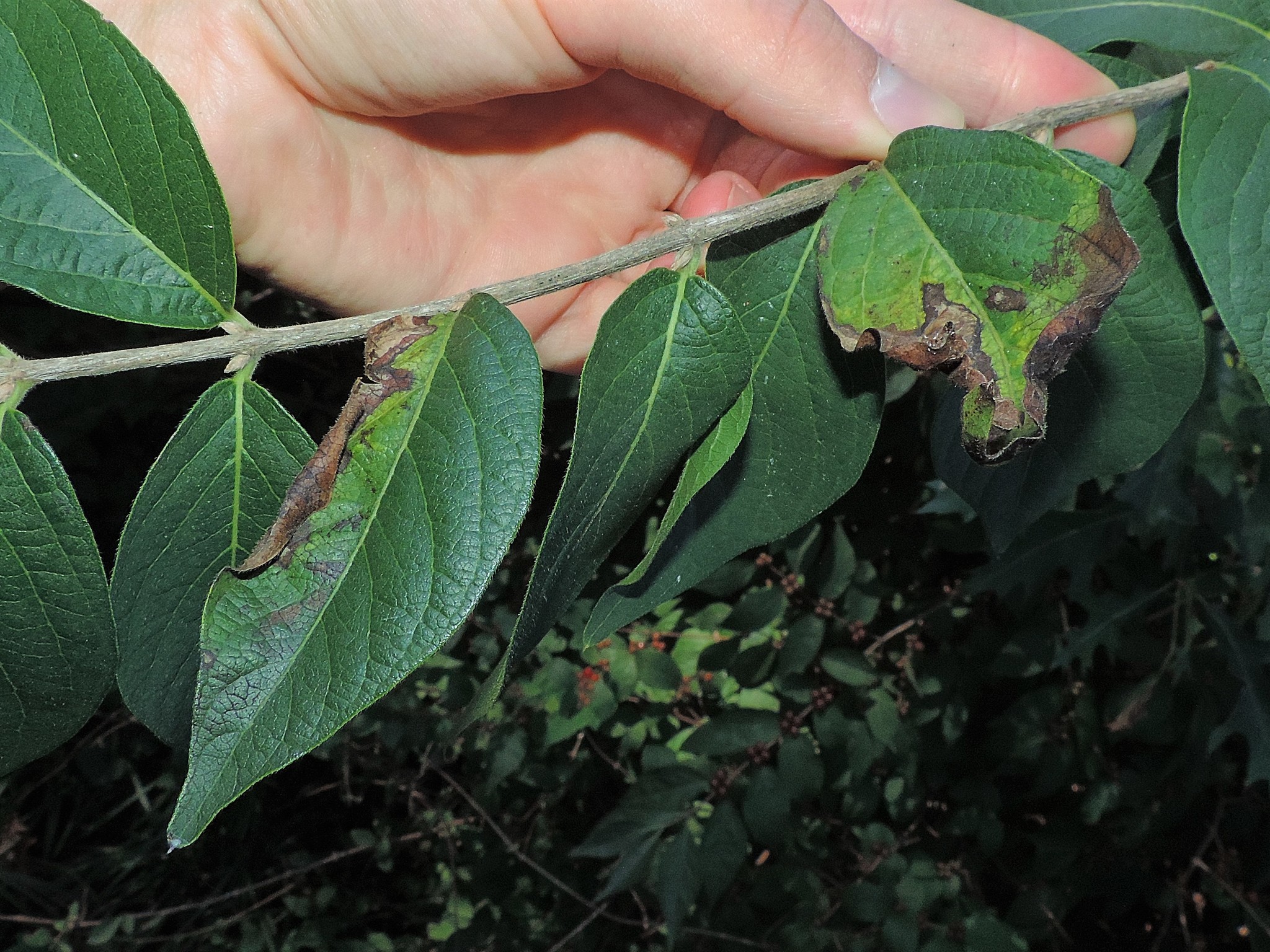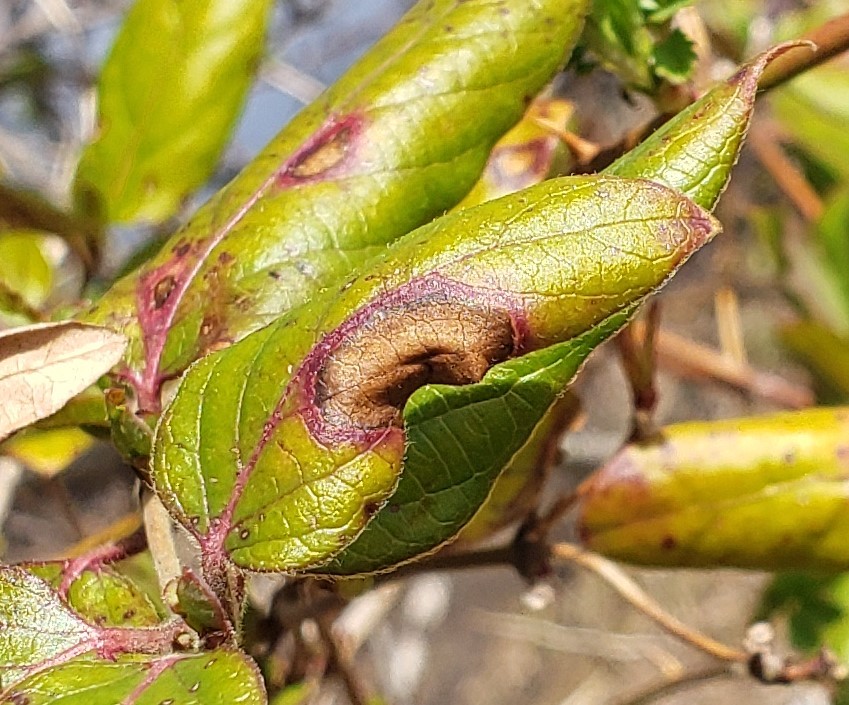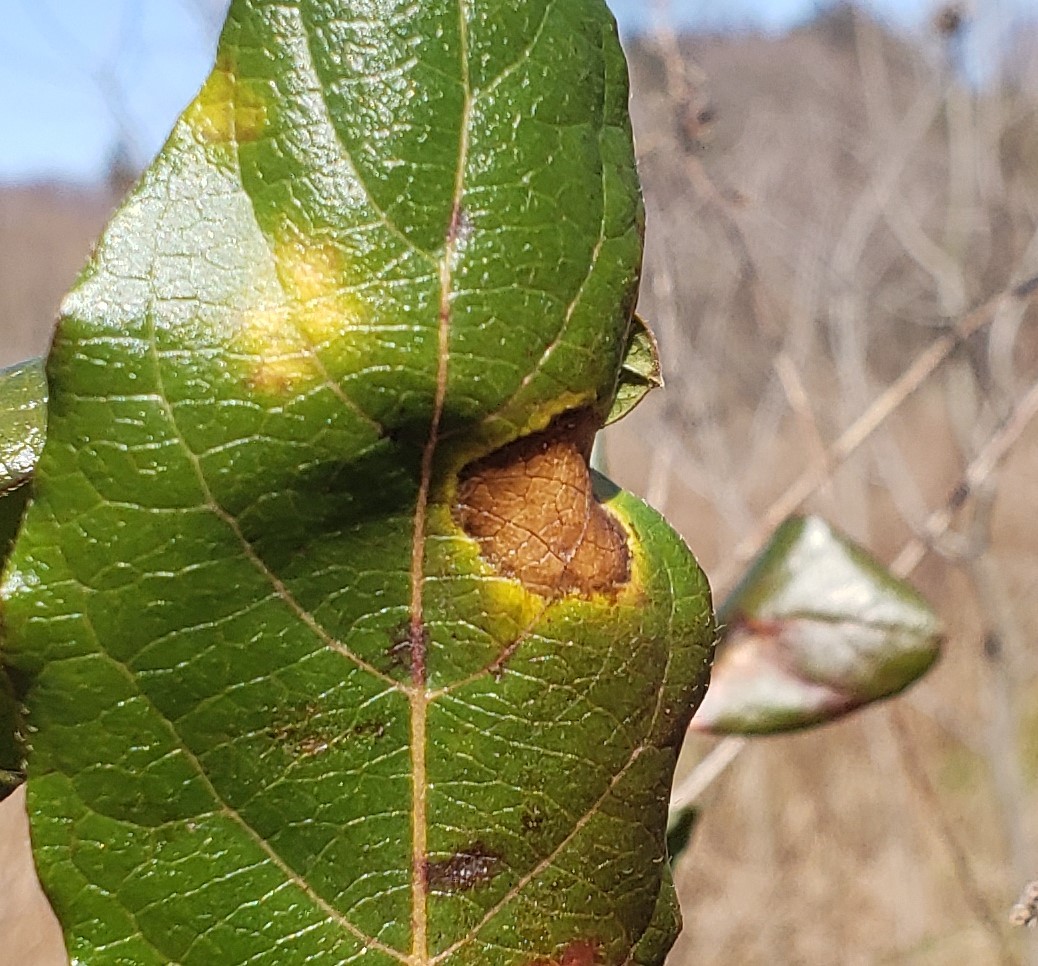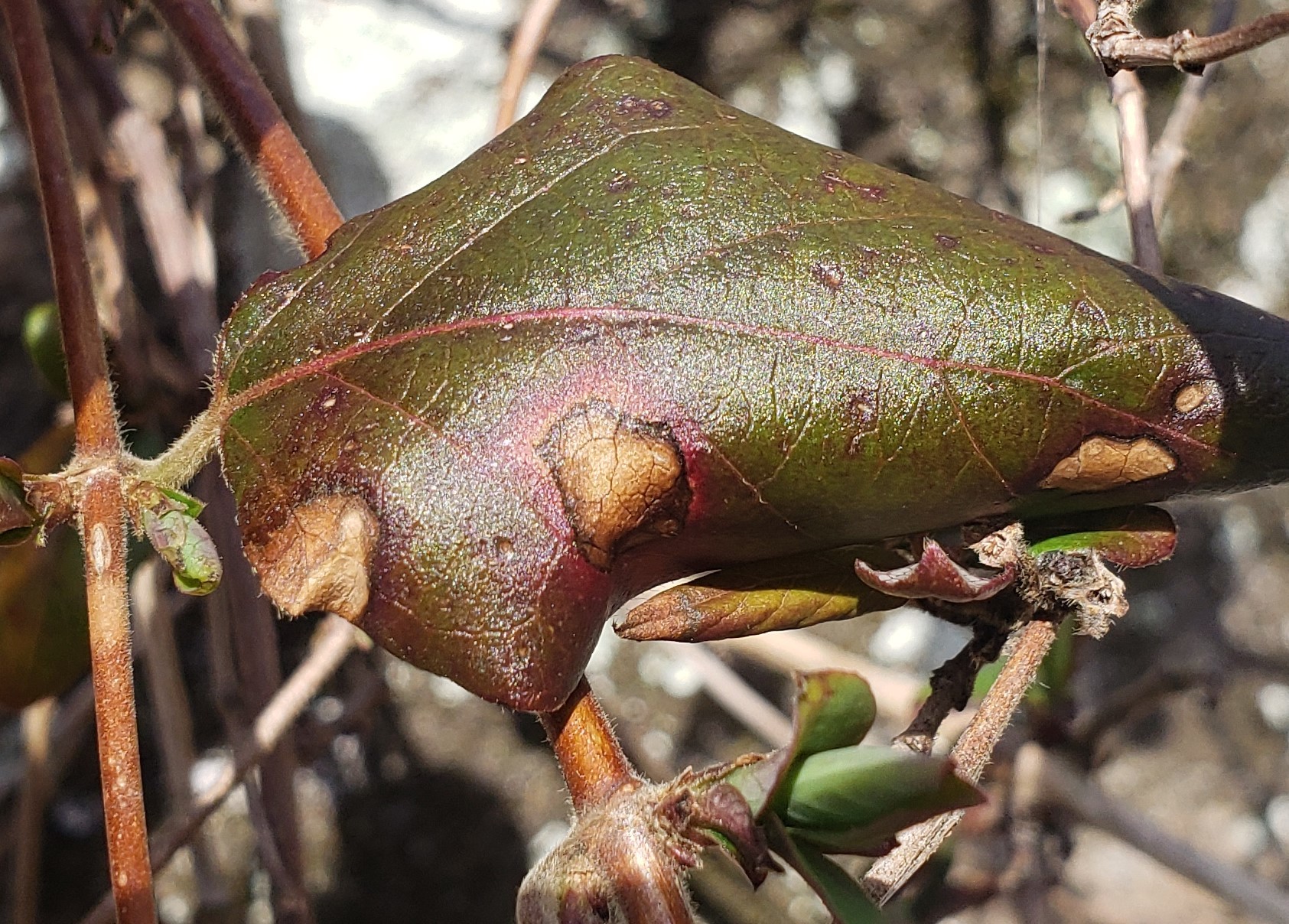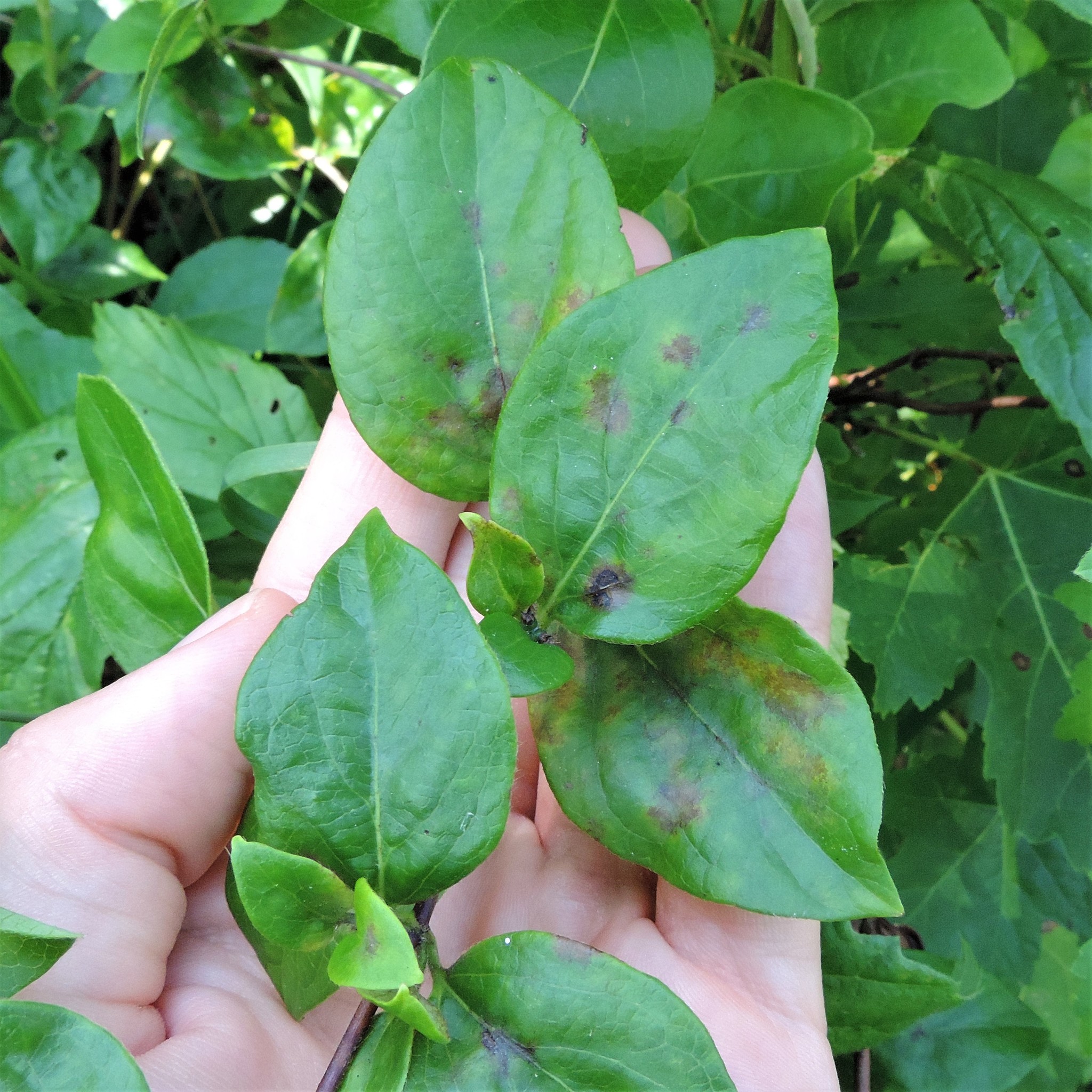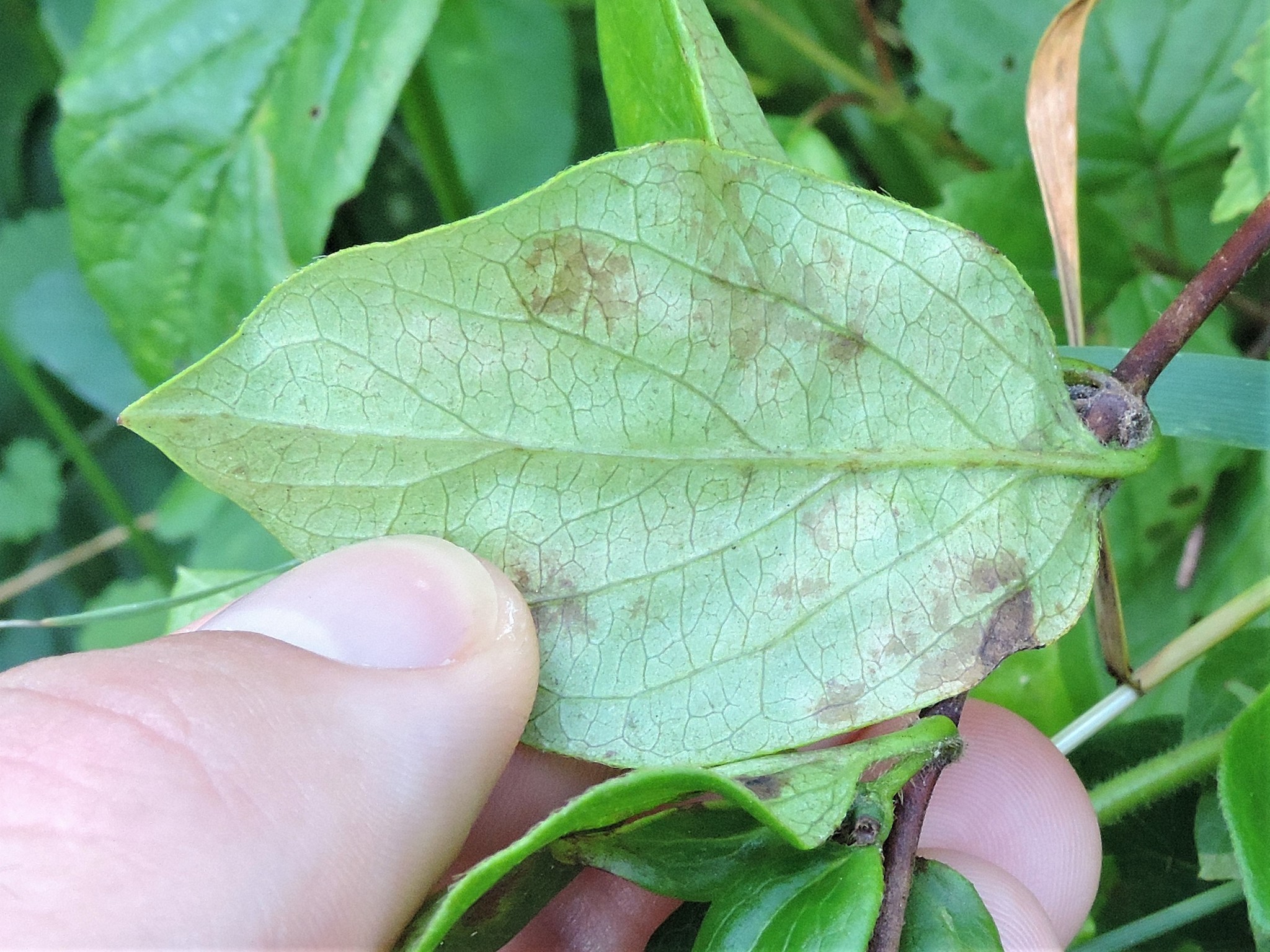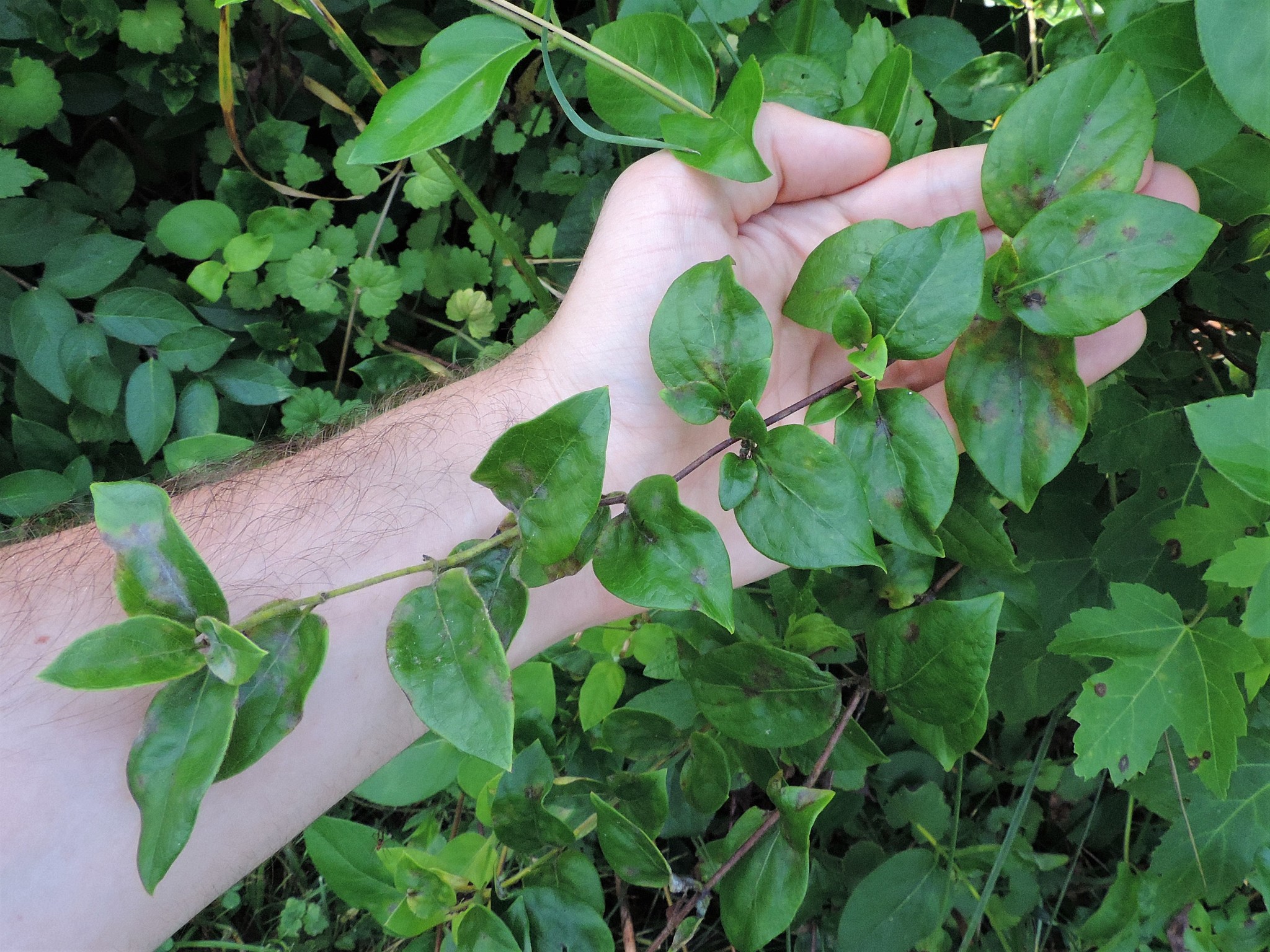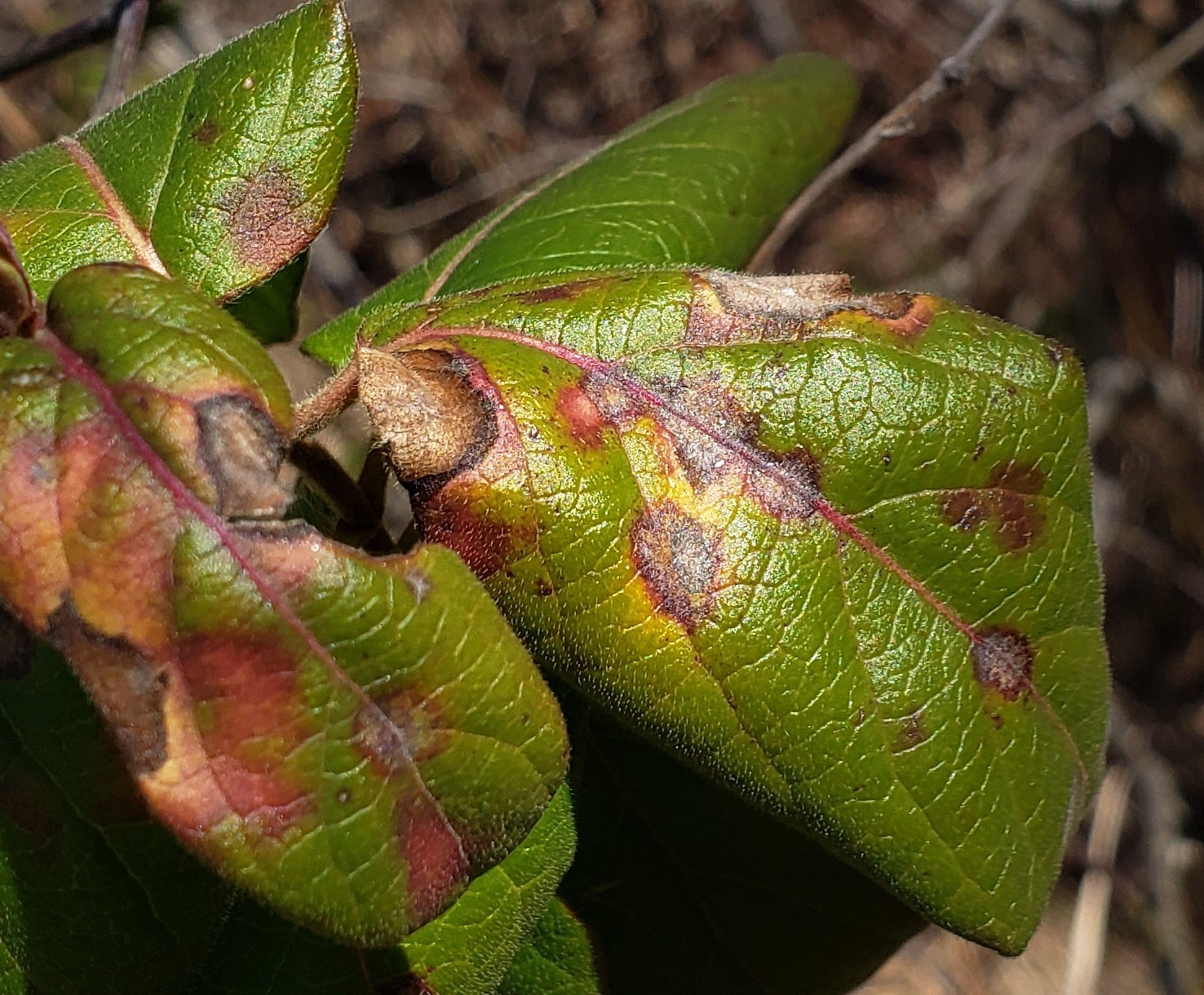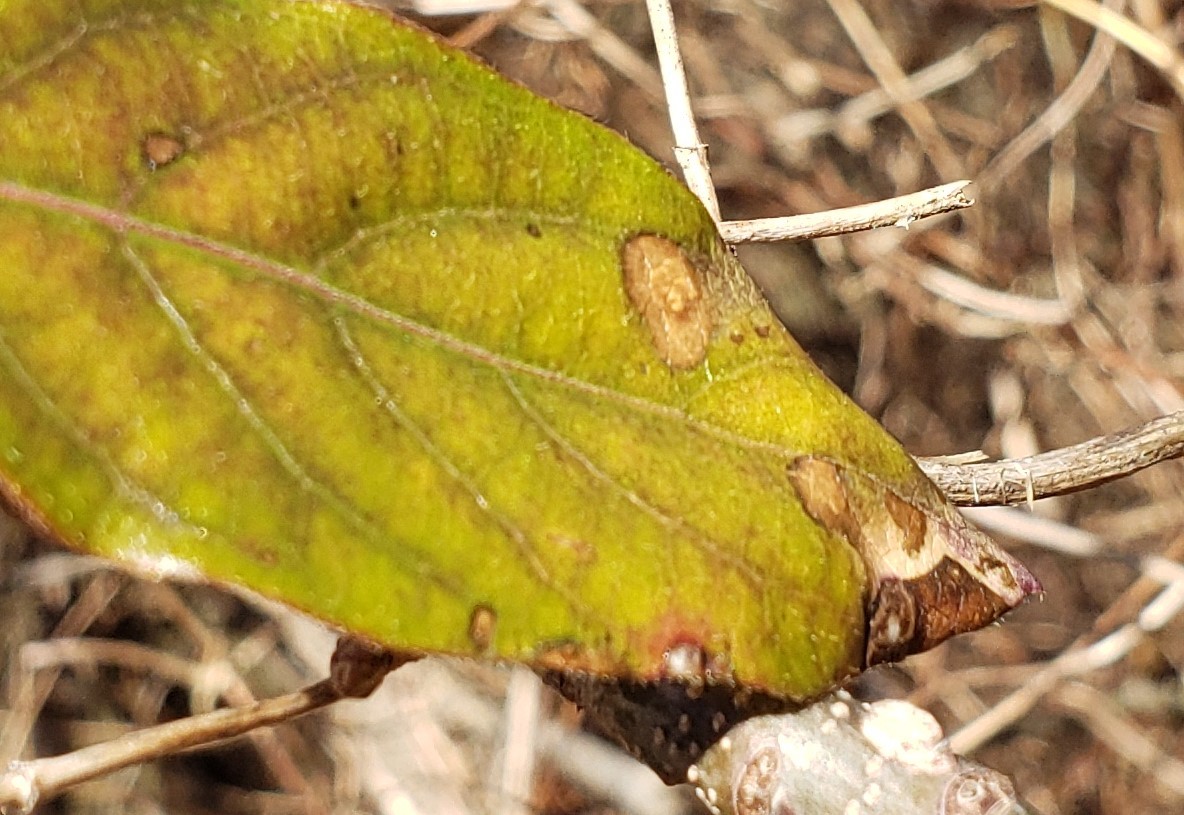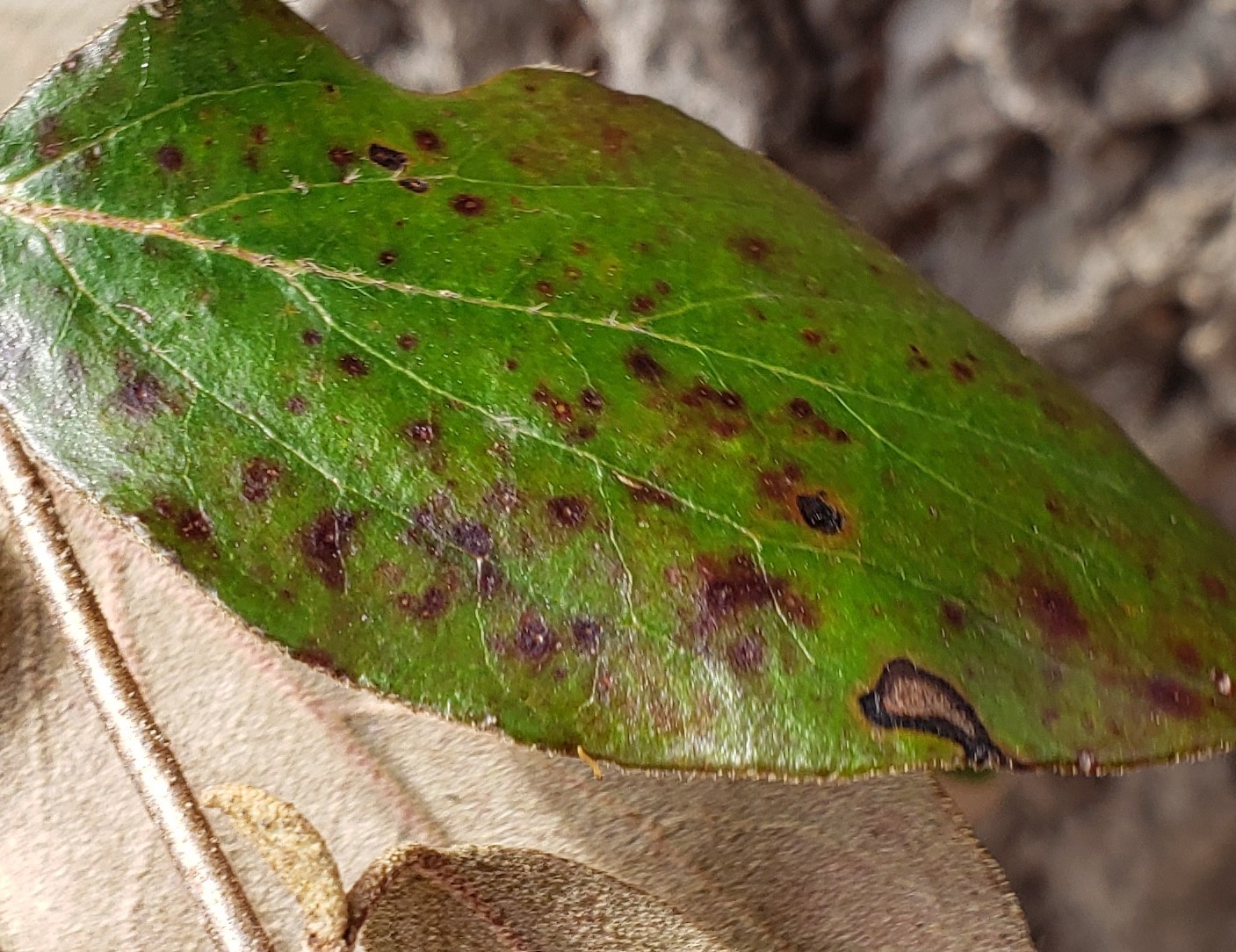Map Snapshot










27 Records
Status
Insolibasidium deformans is a microscopic, pathogenic fungus. Observations without microscopic confirmation are speculative.
Description
Honeysuckle Leaf Blight affects newly-emerged leaves and causes yellowing and, eventually, necrosis of the leaves of honeysuckle.
Seasonality Snapshot
Source: Wikipedia
| Insolibasidium | |
|---|---|
| Scientific classification | |
| Domain: | Eukaryota |
| Kingdom: | Fungi |
| Division: | Basidiomycota |
| Class: | Pucciniomycetes |
| Order: | Platygloeales |
| Family: | Platygloeaceae |
| Genus: | Insolibasidium Oberw. & Bandoni |
| Species: | I. deformans
|
| Binomial name | |
| Insolibasidium deformans | |
| Synonyms | |
|
Herpobasidium deformans C.J. Gould (1945) | |
Insolibasidium deformans is a species of fungus belonging to the order Platygloeales.[1] It is currently the only species in the monotypic genus Insolibasidium. The fungus parasitizes leaves of various Lonicera species, causing honeysuckle leaf blight, a commercially significant disease in plant nurseries.[2]
The known hosts for Insolibasidium deformans include at least 18 species of Lonicera.[3] The fungus parasitizes host leaves, producing hyphae within the leaf tissues and basidia that protrude through the stomata. Microscopically, the basidia are auricularioid (tubular with lateral septa).[3] Infected leaves become yellow, then brown, and finally dead and dry with brown areas. Leaves often become rolled and twisted and drop prematurely.[2]
The species is native to North America[3] and has been introduced into the UK where honeysuckle leaf blight was first observed in 2000 [4] and into Australia, where the disease was first observed in 2003.[5] It has also been recorded from Germany,[6] Poland,[7] and New Zealand.[8]
References
[edit]- ^ Bauer R, Begerow D, Sampaio JP, Weiss M, Oberwinkler F (2006). "The simple-septate basidiomycetes: a synopsis". Mycological Progress. 5 (1): 41–66. doi:10.1007/s11557-006-0502-0.
- ^ a b Riffle JW, Watkins JF (1986). Honeysuckle leaf blight (in Riffle JW, Peterson GW: Diseases of trees in the Great Plains) (PDF). U.S. Department of Agriculture. Forest Service. pp. 26–29.
- ^ a b c Oberwinkler F, Bandoni R (1984). "Herpobasidium and allied genera". Transactions of the British Mycological Society. 83 (4): 639–658. doi:10.1016/S0007-1536(84)80184-9.
- ^ Beales PA, Scrace J, Cook RT, Barnes AV, Lane CR (2004). "First report of honeysuckle leaf blight (Insolibasidium deformans) on honeysuckle (Lonicera spp.) in the UK". New Disease Reports. 9. doi:10.1111/j.1365-3059.2004.01027.x.
- ^ Cunnington JH, Pascoe IG (2003). "First record of Insolibasidium deformans in Australia". Australasian Plant Pathology. 32: 433. doi:10.1071/AP03038.
- ^ Kruse J, Thiel H, Brodtbeck T, Ecker H, Leb C, Ostrow H, Rätzel S, Kummer V (2017). "Bemerkenswerte Funde phytoparasitischer Kleinpilze. 7". Zeitschrift für Mykologie. 83: 127–156.
- ^ Braun U (2006). "Fungi selecti exsiccati ex Herbario Universitatis Halensis − nos. 31–70". Schlechtendalia. 14: 33–47.
- ^ Waipara NW, Winks CJ, Smith LA, Wilkie JP (2007). "Natural enemies of Japanese Honeysuckle Lonicera japonica in New Zealand". New Zealand Plant Protection. 60: 158–163.
